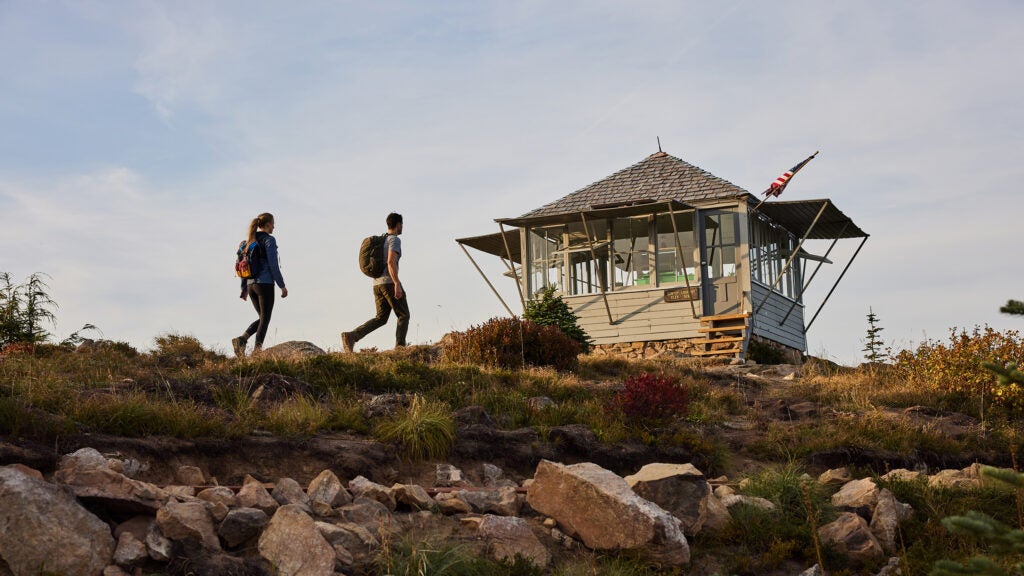The dance floor is one of life’s great playgrounds, but for many of us, stepping onto it can take more than a little courage. Dance classes can be confidence boosters, but starting out can also be a bit intimidating and, given the pandemic, there are reasons to think twice about learning new moves the traditional way, in a steamy dance studio with a group of sweaty strangers. All that breathless human contact might not be right for you, masked or not.
And whether learning to dance is on your bucket list, or you’re prepping for an occasion, or you want to level up on TikTok, in-person classes can be expensive, inconvenient or simply unavailable in the dance style you’re looking for.
This is where dance apps and online lessons come in. Digital dance classes have been around for years, but they really took off during the pandemic, as studios shut down and professional dancers needed a way to maintain their technique at home. The digital format allows you to learn at your own pace, in your own space, in a one-on-one setting. You don’t get the personal attention of traditional classes, of course, but there are pluses with the best digital platforms. Many of them offer lessons by masters in the field, some of the most recognizable names in hip-hop, ballet and modern dance. Imagine the Instagrammers of your dreams breaking down their corkscrew spins and urging you on like they’re your new best friend/cool big sib/motivational coach/find-your-own-groove guru.
I’ve bopped and bounced my way through 15 of these teaching platforms and I’ve discovered that it’s possible to get those big, sweaty, crazy-joyous dance vibes through online classes in the convenience of your home. I’ve also found quality instruction, which is crucial. After all, you probably won’t get hurt from a bad online painting class, but you risk knee and ankle sprains or worse from twisting and swiveling with poor technique.
What interested me most is the detailed (and fun) process of learning new skills in an art form, so I limited my top picks to dance instruction rather than dance workouts, though I tried several. If you’re looking for a music-driven, dance-based workout, check out the Sculpt Society, created by dancer and fitness trainer Megan Roup; 305 at Home, an offshoot of the 305 Fitness studios, with live and on-demand dance cardio and other workouts; Forward_Space, an outgrowth of the New York studio founded by choreographer Kristin Sudeikis; and School of SOS, created by backing dancer Bonnie Parsons, who imparts a strong message of female empowerment through confidence webinars, on-demand workouts and daily live streams, and donates 10% of subscription profits to charities that help women.
Some of the instruction apps I sampled are narrowly focused on a single dance style, such as Operation: Tap, which teaches choreographed routines along with technique; Pocket Salsa, offering music downloads as well as dance tutorials; and Koros, founded by world Latin dance champions Riccardo Cocchi and Yulia Zagoruychenko. This ballroom app features interactive live sessions as well as archived classes, but it’s best suited for the serious competition dancer. And at $49.99 per month, it’s the most expensive option I found.
The single-genre apps are good for the specialized student, but for this list, I gravitated to sites with more options, where a jazz enthusiast might also take a spin, say, through heels or locking classes. Among those that didn’t make it into my top five but are worth checking out: learntodance.com, with its short demonstrations of the basics (good for absolute beginners); YouDance, primarily aimed at children and teens (it’s also the only site I found that features clogging, along with the more standard ballet, hip-hop and jazz classes), and CLI Studios, which has a large catalogue of classes taught by some big-name professionals, but unlike other sites doesn’t offer previews, so you need to sign up before seeing how classes proceed.
Many of these sites deliver much more than dance classes. Some include workouts, interviews, guided meditations and sessions on musicality, healthy eating and self-care. With most monthly subscriptions priced about the same as a single in-person class, you might be surprised by what these platforms offer at your fingertips for body and mind.
Another bonus: Whether your preference is K-pop or krump, West African or salsa, digital classes allow you to literally dance like no one’s watching.
Here are my five favorites:
1. Steezy
This app is immediately engaging, with a lively, fluid layout that draws you from one well-produced class preview to another. The name derives from skateboard culture, a combination of stylish and easy, and the app lives up to that. It’s easy to navigate, easy to select and load classes, easy to vibe with the more than 100 instructors. Among them are social media celebrities such as B-dash and Bailey Sok, and veterans including Buddha Stretch, the exquisitely light-footed freestyle hip-hop master (I could watch his hip rolls all day long), and popping pioneer Popin’ Pete. The videos are maneuverable, which is a help: You can control the speed, change the view so you’re watching the instructor from behind, and loop the moves for more practice. Your webcam can serve as a mirror.
Founders Connor Lim, 31, and Evan Zhou, 32, started out as competitive hip-hop dancers in the early 2000s, “when it would take three hours to download a video,” Lim said in a recent interview from Steezy’s headquarters in Los Angeles. Frustrated at the lack of resources, in 2014 they started a blog to share dancing tips. Zhou, a web developer, got involved in building the yoga app Glo, and that became the model for Steezy.
“But learning to move in 3D space through 2D video is actually quite difficult,” Lim says. “We said, ‘If we’re going to use tech to bring dance to people around the world, we have to improve how people can learn.’ “
It comes down to patience, he says. And counting out the moves.
“We make the instructors do it slow and count it slow,” Lim says, “because there’s intention in doing that.”
The app debuted in 2015, and by 2016 it was a subscription platform. Lim declined to share subscriber numbers, but he says the app has more than a million downloads, with users in more than 100 countries.
I appreciate the isolated warm-ups, such as a “shoulder mobility” session, and the bits of history and culture that the instructors weave into their classes. Jojo Diggs started her house classes talking about its underground origins and Chicago history, then coaxed me into finding my “jack” – a soulful, rocking, rolling wave that ripples through the body and is the foundation of house.
“Always be thinking about your jack, your groove,” she urges, smiling as the downbeat pulsed through her like an electric charge. “It’s your source, your funk. Your natural state. It’s YOU.” I wasn’t sure if she was still talking about dancing, but so much the better. House as philosophy? Why not?
Seven-day free trial; $20/month or $100/year.
2. Mark Morris Digital Dance Center
This new platform, launched in January, is an offshoot of the Mark Morris Dance Group, a world-renowned modern dance company based in Brooklyn, where it also houses a community dance center. On-demand classes in ballet, tap, hip-hop, Latin, West African, modern and more are taught by company dancers and faculty of the Mark Morris Dance Center. The format is straightforward – a teacher demonstrates in a studio, sometimes with an assistant, often with a live drummer or pianist, in keeping with Morris’s insistence on live music for his company’s performances. Demonstrations are exceedingly clear, with a focus on good technique.
“There can be an emotional barrier to coming into a dance center, especially when it’s a state-of-the-art home to a professional dance company,” says Sarah Marcus, MMDG’s director of education and community engagement. The online classes are essentially a digital replica of the dance center’s offerings, she says, and they’re geared to help the adult beginner or intermediate student ease past any inhibitions.
Subscriptions include unlimited access to all on-demand videos of the digital dance center; new classes are added monthly.
Seven-day free trial; $19.99/month or $209.99/year.
3. L.A. Dance Project
The Los Angeles-based contemporary dance company launched its app in 2020 and claims that it’s the first digital platform for a global dance company. This sleek, artfully designed app may appeal primarily to people who already have a dance background. It offers progressive series of classes in ballet, contemporary dance, fitness and dance for children. Brief “learn the dance” videos teach short pieces of choreography. There are master classes in a range of styles, including bharatanatyam and house, taught by guest teachers. In ballet, these include former American Ballet Theatre principal Stella Abrera and Sara Mearns, the New York City Ballet star. Watching Mearns’s pointe exercises – strictly for the advanced student – is an education in the sheer athletic difficulty of pointework, and the utter beauty of it. I enjoyed the fluid style of Shu Kinouchi, who takes an especially warm, joyful approach to his beginner-level ballet classes.
The app also includes interviews with performing artists (among them, ballerina Misty Copeland and choreographer Kyle Abraham), dance films and classes in nutrition, breathwork, yoga and more. New classes are added daily.
Seven-day free trial; $9.99/month or $69.99/year.
4. Dance Plug
This attractive site offers “tutorials,” rather than classes. They’re meant to complement in-person classes, as the site states: “We are still strong believers that online services cannot and should not replace a regular in-person class.” Choose from warm-ups, steps, exercises and combinations, and dance styles such as hip-hop, house, tap, theater dance and Bollywood. If you’re already taking in-person classes and you have an audition coming up or you dream of a career in musical theater or commercial dance, this would be a good choice to get some extra polish.
Kudos to DancePlug for stressing safety while dancing at home. The site offers an entire page on creating a safe space for dancing, with tips such as modifying the movements to suit your space and avoiding pivots or turns if your floor offers too much friction.
There’s also a smart selection of articles on such topics as dealing with long covid and how to improve your musical awareness as a dancer.
The site also makes a point of showcasing music by lesser-known artists; while studying the stylish theater-dance combination taught by Nichelle Bane, I fell in love with the accompaniment: sweet, light jazz singing by unfamiliar vocalist Mathilda June.
Seven-day free trial; $20/month, $49 for four months, $99/year.
5. Dancio
This site offers master classes by such eminences as Khalia Campbell of Alvin Ailey American Dance Theater, former American Ballet Theatre star and Washington Ballet director Julie Kent, and Wendy Whelan, associate artistic director of New York City Ballet, who talks about the “architecture” of ballet – an intriguing concept – as she’s sending you flying across your floor. The list of high-caliber teachers is singularly impressive, and they teach all levels. The emphasis is on ballet, modern (taught by specialists in the techniques of Martha Graham, Paul Taylor, Merce Cunningham and others) and contemporary, but there’s a smattering of hip-hop, West African and jazz. There are varied cost levels; if you’re looking for frequent classes, it’s one of the pricier options.
The site offers 48-hour, single class rentals for $10 each; or you can opt for a subscription: $30/month, or $306/year. A curated bundle of four to five classes seems to be a good buy at $10 a month for unlimited access; you can choose from categories such as “Absolute beginner ballet” and “Discover dance sampler.”












